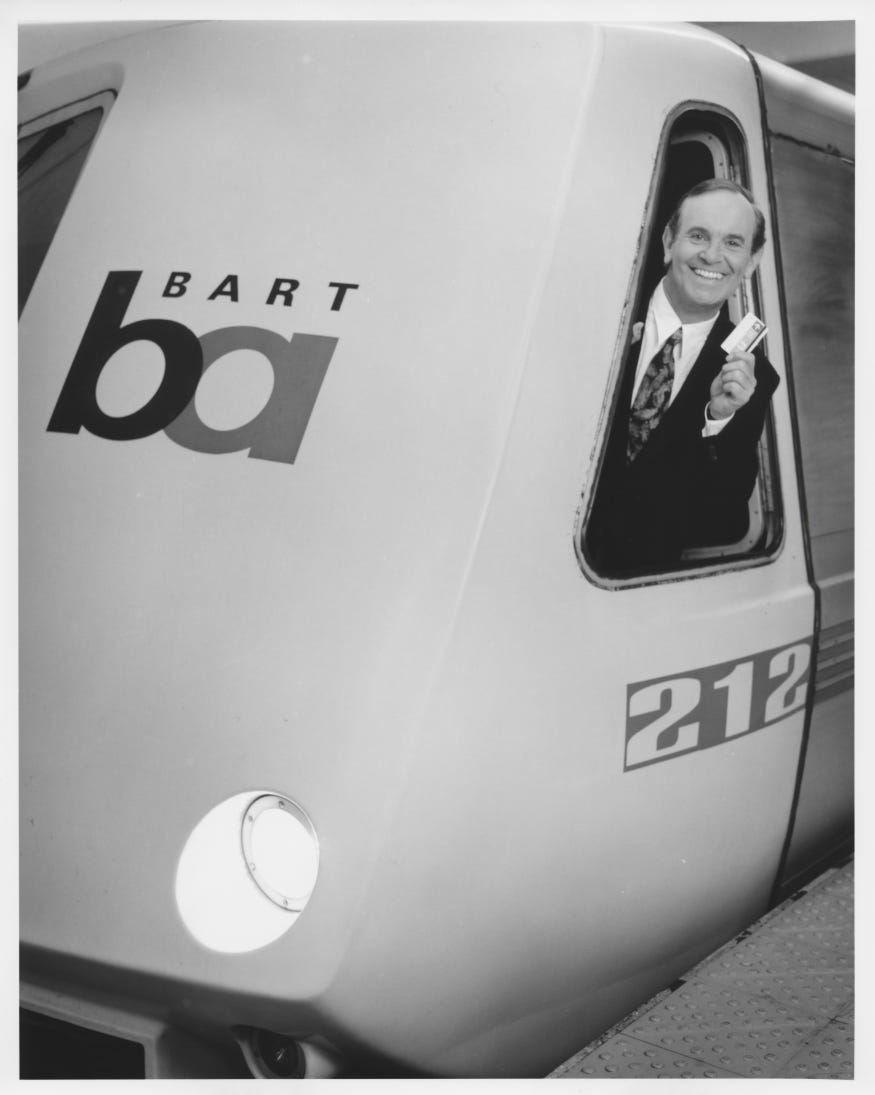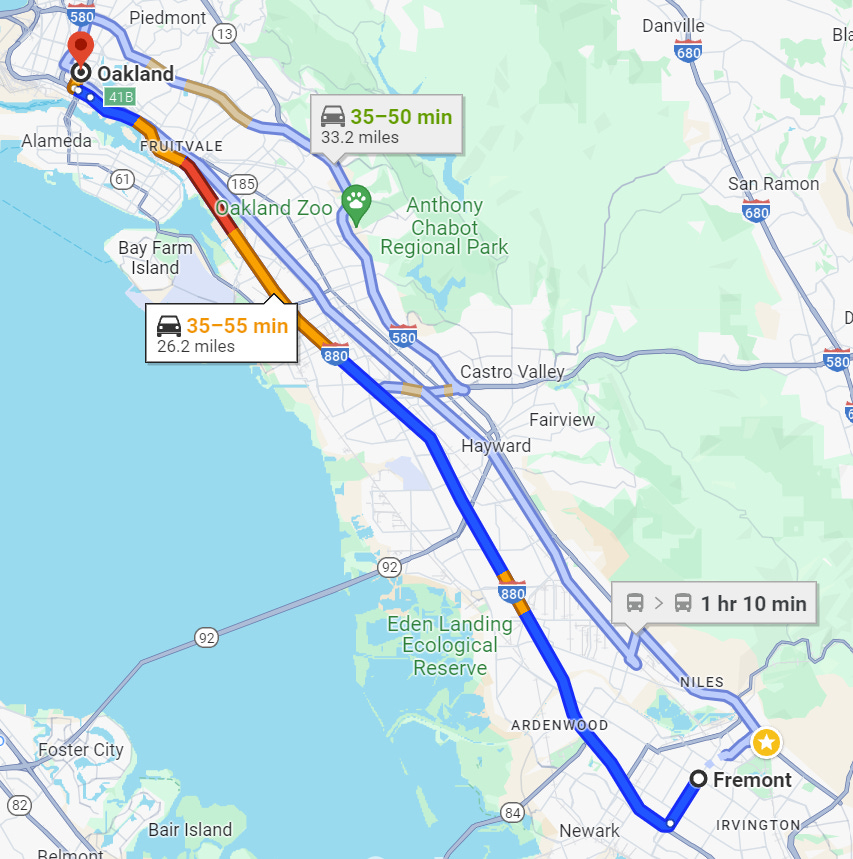Why I Like the BART
despite the crackheads
I recently started a job in Oakland, and I live in Fremont.
The two options for my commute were either to drive or take the BART. I mulled over both options as my start date inched closer.
I could drive, for 50 minutes every morning, or take a 35-minute train. The train, while seemingly a better option, does have an additional 15-minute walk to the train station, and I have to pester my mom to pick me up and drop me off at the train station (5 minutes away from my house)
Street parking in Oakland is not advisable, so driving would mean coughing up the 85-dollar-a-month parking garage fee. The BART comes with its costs, a $5.20 fair, and the occasional $3 parking fee when I can’t get a ride to the station. I work 20 days a month, which totals $208 for BART fairs. Let’s add $25 for parking, making our BART total $233. Which sounds like a lot. But let’s do our due diligence and calculate the cost of driving.
My car takes premium gas, which costs close to $5 a gallon, and gets about 28 miles a gallon; my commute is 50 miles round trip. That comes out to 1.78 gallons of gas daily, which costs $8.90 a day and $178 for the whole month. That plus 85 dollars for parking comes out to $263.
So counterintuitively, the pinch I feel tapping my clipper card at the turnstile every morning is irrational; each time I do it, I save $1.50
But numbers are just one part of the equation. How does the experience of taking the BART differ from driving?
Driving is convenient. I walk out the door as soon as I’m ready and don’t have to stress about a missed train or a delayed departure. It also ends up being slightly faster than the train, because I don’t have to wait around or walk from the station to my office.
The BART can be inconvenient in the mornings, having to leave the house exactly at 845 to comfortably make the 855 train can be stressful. If I miss the train, then I will miss my first meeting of the day. But if I’m at the station on time, the train is awesome. I usually read for about 20 of the 35-minute journey (currently reading Sapiens). I get off at my stop and take a leisurely walk from the Station to the office. Contrast that with the car ride. I am kind of on edge because traffic can be annoying, and I’m always fiddling with my phone to find a podcast to listen to, which is not good I should be paying full attention to the road ahead. But if the drive is traffic-free, a good podcast is playing, and I have my thermos of coffee in my cupholder it can be just as relaxing as the train. Additionally, driving gives me the flexibility that the train just can’t. Wanna hang out with friends in Berkeley? Grab groceries on the way home? Go to the Gym? Well, I better have driven that day, because otherwise, it’s not gonna happen. The BART can be convenient after the occasional happy hour when the group chooses a bar close to the station. Cause drinking and driving is wrong duh.
I’m now a few weeks into my new job and I’ve taken the Bart there most days. Unknowingly I’ve come to be immensely thankful for this public service. I’m in a privileged position where I’ll find a way to work no matter what, but others aren’t as fortunate. Working-class people, who may not have access to private transportation, rely heavily on the BART to commute to work. But it’s not just blue-collar folks, techies, students, and homeless people all use the BART to get around. It’s kind of cool to see a cross-section of American society, all inside of a train made in China. Nurses in scrubs, programmers with their hackathon tee shirts, artists, musicians, and even eager high school students whose parents finally let them go to San Francisco alone. “When else would this group of people ever be in a room together?”, I often think to myself.
And climate change. The BART is better for that. Phew, I knew I was forgetting something.
-Raj




fun fact : taking BART for 1 month straight emits less CO2 than driving that same trip just 1 time